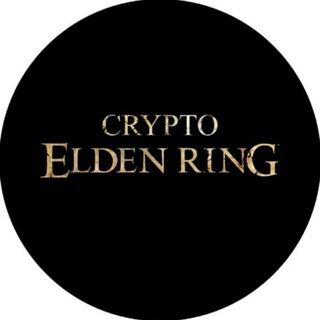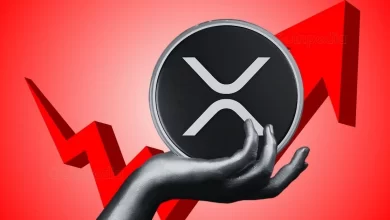A Beginner’s Guide To Altcoins: How, What, Where and Why!
Did you know that there are over 20,000 cryptocurrencies in existence today? Yep, Bitcoin might be the king, but it’s not alone on the throne. Welcome to the world of altcoins.
If you’re scratching your head wondering what altcoins are, how they work, and why people are so excited about them, don’t worry—I’ve got you covered.
What Are Altcoins?
We will start with the basics.
The term “altcoin” simply means “alternative coin.” It’s any cryptocurrency that isn’t Bitcoin. Why the focus on Bitcoin?
Well, Bitcoin was the first cryptocurrency, and it’s the most popular. But just like you don’t only drink Coke when there’s a world of sodas out there, the crypto universe is packed with alternatives offering their own flavors and benefits.
Altcoins can range from big names like Ethereum and Binance Coin to niche coins you’ve probably never heard of. Some altcoins are designed for specific purposes, like faster payments, better privacy, or even just being a joke (hello, Dogecoin!).
Why Do Altcoins Exist?
Bitcoin is great, but it’s not perfect. It’s slow, and its network can get expensive to use when it’s busy. Altcoins aim to improve on Bitcoin’s technology or solve other problems.
For example:
- Ethereum: It is like the “smartphone” of crypto. It allows developers to build apps on its network, making it way more than just digital money.
- Litecoin: It’s like Bitcoin but faster and cheaper for transactions.
- Ripple (XRP): Focused on helping banks transfer money across borders quickly.
- Cardano: Known for being environmentally friendly and highly secure.
So, altcoins exist because innovation never stops. Developers and communities create these coins to push the boundaries of what cryptocurrency can do.
Types of Altcoins
Altcoins aren’t a one-size-fits-all deal. They fall into different categories based on what they’re trying to achieve.
Here are the most common types:
Payment Coins:
Like Bitcoin, these are designed to be used as digital money.
Example: Litecoin, Bitcoin Cash.
Stablecoins:
Their value is tied to something stable like the US dollar, making them less volatile.
Example: Tether (USDT), USD Coin (USDC).
Utility Tokens:
These power blockchain applications.
For instance, Ethereum’s Ether (ETH) is used to pay for transactions and run apps.
Security Tokens:
Think of these like digital stocks. They represent ownership in a project or company.
Meme Coins:
Often created as a joke, but some gain massive popularity.
Example: Dogecoin, Shiba Inu.
Governance Tokens:
Allow holders to vote on changes to the blockchain project.
Example: Uniswap (UNI), Aave.
Each type has its own use case, strengths, and risks. Knowing the difference is key when deciding which altcoins are worth your attention.
How to Buy Altcoins?
So, you’re ready to dive in? Great! Here’s how you can get started with altcoins.
1. Pick a Crypto Exchange
Think of an exchange as the marketplace where you can buy and sell cryptocurrencies. Some popular options include:
- Binance: Huge selection of altcoins.
- Coinbase: Beginner-friendly and secure.
- Kraken: Great for slightly advanced users.
- KuCoin: Offers lesser-known altcoins.
2. Create an Account
You’ll need to sign up, verify your identity, and link your bank account or credit card. It’s just like signing up for any other online service, but with extra security steps.
3. Do Your Research
Don’t buy a coin just because someone hyped it up on Twitter. Look into its purpose, team, and roadmap. Ask yourself: does this coin solve a real problem?
4. Make the Purchase
Once you’ve decided on a coin, search for it on the exchange, choose how much you want to buy, and hit “buy.” Easy peasy!
5. Store Your Coins Safely
Leaving your coins on an exchange isn’t the safest option. Use a wallet for extra security:
- Hot Wallets: Online and easy to use. Example: MetaMask, Trust Wallet.
- Cold Wallets: Offline and super secure. Example: Ledger, Trezor.
Where to Learn More About Altcoins?
The crypto space moves fast, and staying informed is crucial. Here are some ways to keep up:
- Follow Crypto News Sites: Websites like CoinDesk and CoinTelegraph are great for updates.
- Join Communities: Reddit (r/cryptocurrency), Discord, and Telegram groups are buzzing with discussions.
- YouTube Channels: Many creators break down complex topics in easy-to-understand videos.
- Whitepapers: If you want to dig deep, read the official documents of a project.
Why Invest in Altcoins?
Altcoins can be exciting, but why should you consider them at all? Here are a few reasons:
- Diverse Opportunities: Some altcoins can give higher returns than Bitcoin if they succeed.
- Lower Entry Costs: Many altcoins are much cheaper than Bitcoin, making them accessible for beginners.
- Innovative Technology: By investing, you support cutting-edge tech.
- Portfolio Diversification: Adding altcoins spreads your risk across different projects.
Risks You Need to Know
Hold up—before you jump in, let’s talk about the risks. Cryptocurrencies are not a guaranteed way to get rich, and altcoins come with their own set of challenges:
- Volatility: Prices can skyrocket one day and crash the next.
- Scams: Some altcoins are created to trick people. Always research!
- Lack of Regulation: The crypto world is still like the Wild West.
- Liquidity Issues: Lesser-known coins might be hard to buy or sell.
Coinpedia Tips for Success
- Start Small: Only invest what you can afford to lose.
- Diversify: Don’t put all your money into one coin.
- Stay Patient: Crypto isn’t a get-rich-quick scheme. Think long-term.
- Keep Learning: The more you know, the better decisions you’ll make.
So, what’s next?
Altcoins are an exciting part of the cryptocurrency world. They offer a glimpse into the future of finance and technology.
But remember, with great potential comes great responsibility. Take your time to learn, stay cautious, and enjoy the journey.
So, are you ready to explore the world beyond Bitcoin? It’s a big, wild space out there, but with the right mindset and knowledge, you’re all set to dive in.
- Also Read :
- Blockchain Technology Made Easy: A Step-by-Step Guide for Beginners
- ,











